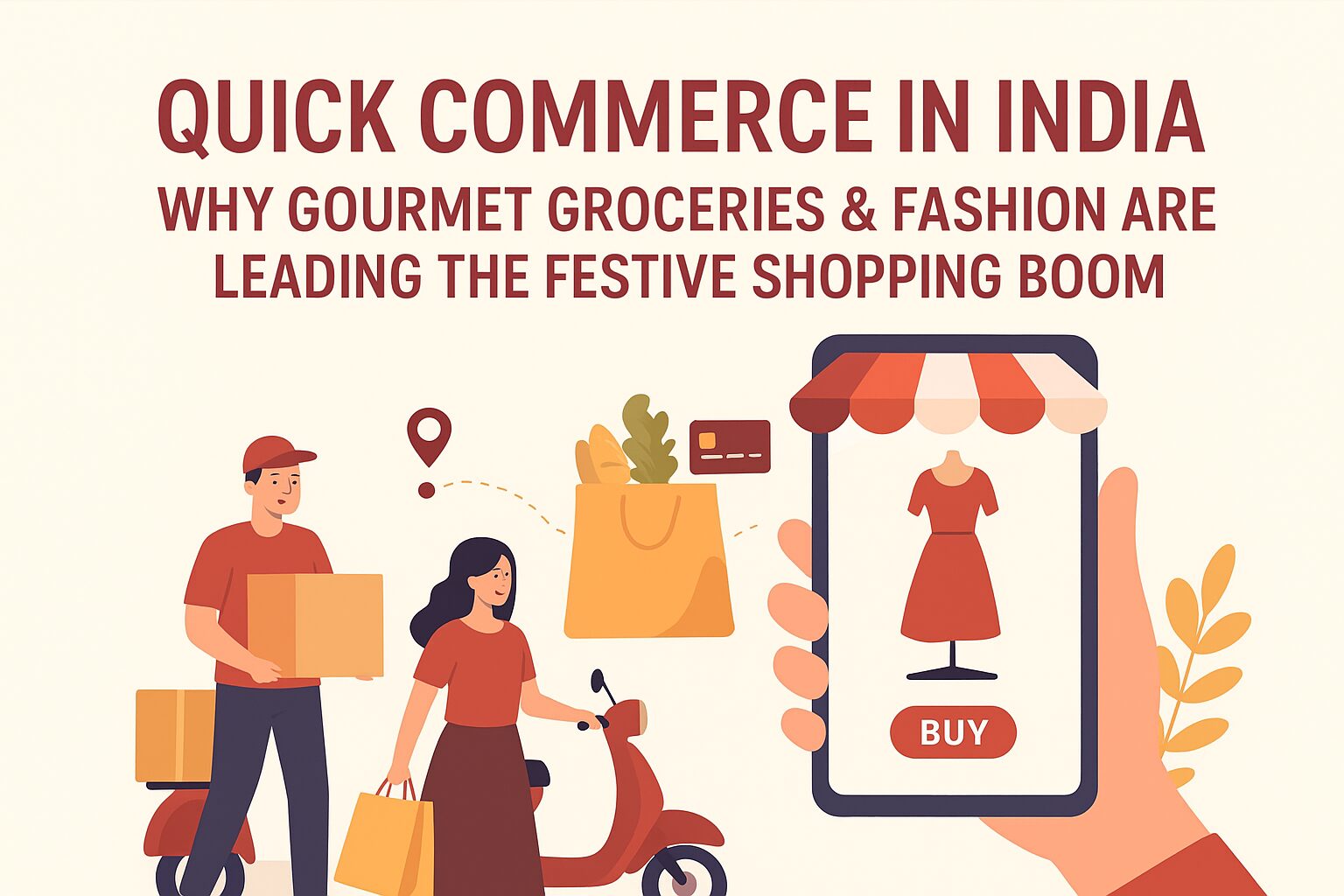
India’s retail landscape is changing rapidly, and quick commerce is at the center of this transformation. This lightning-fast delivery model is reshaping consumer expectations, especially during the festive season. With online spending expected to surge by 115% this year, categories like gourmet groceries and fashion are emerging as the biggest winners.
In this article, we’ll explore why quick commerce in India has become such a game-changer, and why gourmet foods and fashion are driving this boom.
Quick commerce, often referred to as q-commerce, is an evolution of e-commerce focused on hyper-fast delivery. Instead of waiting days for products, consumers now expect essentials and lifestyle products delivered within minutes or a few hours.
This model thrives in urban India, where convenience, speed, and variety are highly valued.
Gourmet foods have emerged as one of the fastest-growing categories within q-commerce, especially during the festive season. Here’s why:
From artisanal cheeses to exotic chocolates, gourmet groceries are redefining festive celebrations.
Fashion has traditionally been at the heart of festive shopping in India, and now it’s finding a new boost through quick commerce.
The combination of urgency and variety makes fashion one of the most successful categories in the q-commerce ecosystem.
The adoption of quick commerce reflects broader changes in consumer habits:
These factors combined are driving the meteoric rise of quick commerce in India.
The rise of quick commerce has forced retailers and brands to rethink strategies:
This disruption is creating both opportunities and challenges for India’s retail ecosystem.
Despite the boom, q-commerce faces some hurdles:
Balancing growth with efficiency and responsibility will be key to the long-term success of quick commerce.
Experts predict that q-commerce will continue to expand beyond metro cities into Tier-2 and Tier-3 markets. Key trends to watch include:
With India’s growing digital adoption, the future of quick commerce looks brighter than ever.
The surge in quick commerce in India is not just about speed; it’s about redefining how people celebrate and consume during festivals. Gourmet groceries and fashion are leading this boom because they cater to India’s evolving tastes, lifestyles, and festive traditions.
As more consumers embrace convenience and premium experiences, quick commerce is set to become an integral part of India’s shopping culture.
©Famous India Blog. All rights reserved.
Creativity By Needinfotech